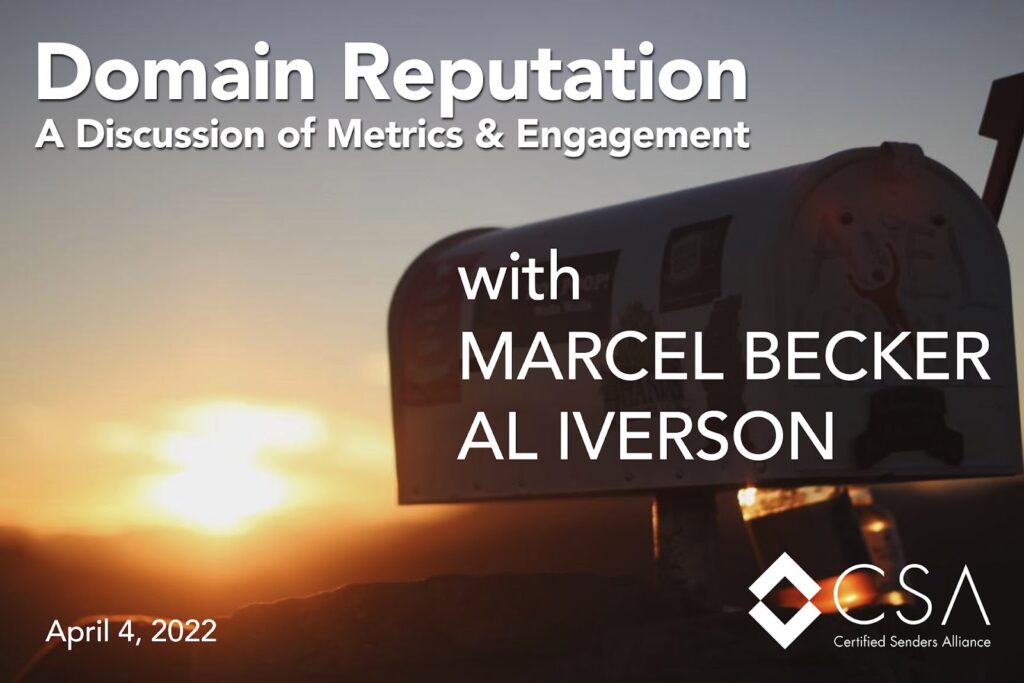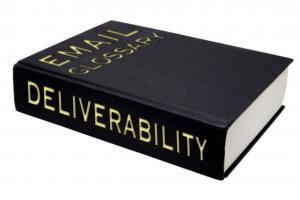domain reputation
On April 4, 2022, the Certified Senders Alliance invited Yahoo’s Marcel Becker and yours truly (Al Iverson) of Spam Resource to “embark upon a discussion of domain reputation” where we also talk in length about open tracking, how it wasn’t that accurate to begin with (bots mostly talking to bots) but now, with Apple’s Mail Privacy Protection (MPP), it’s even less accurate than before. That doesn’t mean you should never rely on open data to make an informed decision about an audience segment — but it does mean that you should never trust an “open” even tracked at the subscriber level, when making any sort of decision on what to do with an individual subscriber. Meaning, don’t use opens as part of your drip campaign logic to decide who gets what email — it won’t be accurate. But, for myself, I’ll continue to say that there’s a place for open
Hey Klaviyo users! Here’s a simple thing you can do to help improve deliverability success when sending emails from Klaviyo.Klaviyo has this “dedicated sending domain” setting that relates to email authentication, specifically DKIM authentication. If you don’t turn it on, Klaviyo still authenticates your email messages, but you basically get authenticated as “one of the group of Klaviyo customers,” not as yourself.If you implement this “dedicated sending domain” fully, you basically end up authenticating mail as yourself, being seen by yourself at mailbox providers (in particular, Gmail) instead of just being seen as “one of the group of Klaviyo customers.”This is a domain reputation thing that makes it easier for Gmail and others to tell you apart from other senders. And if you send good and wanted mail, it’ll make that mail more likely to go to the inbox. It helps you stand apart from the crowd, in a good
Ugh, I hate that goofy stock photo. Needles make me itch. But it’s the best way to frame my concerns, I think. And I have concerns. Because domain reputation is a big deal of late. And I’m seeing people stumble into domain reputation issues — and not necessarily realize it — all because of domain sharing and shared reputation problems.Where? Mostly at Gmail. Domain reputation is definitely a big deal for the biggest mailbox provider, and that is Gmail. (If you’re a typical US B2C sender, the top three providers you’re sending to are going to be Gmail, Yahoo and Microsoft OLC/Outlook.com, in that order. Gmail’s going to be 60%+ of your list, probably.)A Gmail mail rejection (NDR/bounce) like this specifically talks about domain reputation:smtp;550 5.7.1 [x.xx.xx.xx] Our system has detected that this message is likely suspicious due to the very low reputation of the sending domain. To best protect our…
Deliverability. That’s what’s at the center of any successful email marketer’s focus. And that’s why you devote so much energy to keeping your contact list clean, not purchasing third-party data, and designing emails that are sure to land in your clients’ inboxes. But what do all these practices amount to? What’s it all for? The answer is simple: sender reputation. Table of Contents What is sender reputation? How does reputation impact your campaigns? How is sender reputation calculated? How to check your sender reputation SenderScore.org BarracudaCentral TrustedSource Talos Google Postmaster Tools Microsoft SNDS Reputation is only one part of a healthy email program Review your stats Check your domain and IP against blocklists Send yourself messages How to improve a bad reputation with Mailjet What is sender reputation? As the name suggests, your sender reputation is a score that identifies you as a trusted – or mistrusted – sender. Different…
SocketLabs’ Brian Godiksen and Campaign Monitor’s Travis Hazlewood joined forces in this excellent blog post to explain what can go wrong when you use a subdomain (under a domain you don’t own) to send mail. Example? Some registrars offer up this goofy thing where you can buy a “domain” “under” uk.com, like spamresource.uk.com. Neat idea, except it’s really just a subdomain. And the domain uk.com has a poor reputation at Gmail, making it kind of hard to get email delivered to the inbox reliably, if I use a uk.com subdomain as my sending domain.So as to not totally steal their thunder, I’ll make you click on through to get their thoughts on what to do instead, and how to measure risk with regard to your choice of TLD (top level domain). This is one you need to read before you buy a new domain name to use for email!










